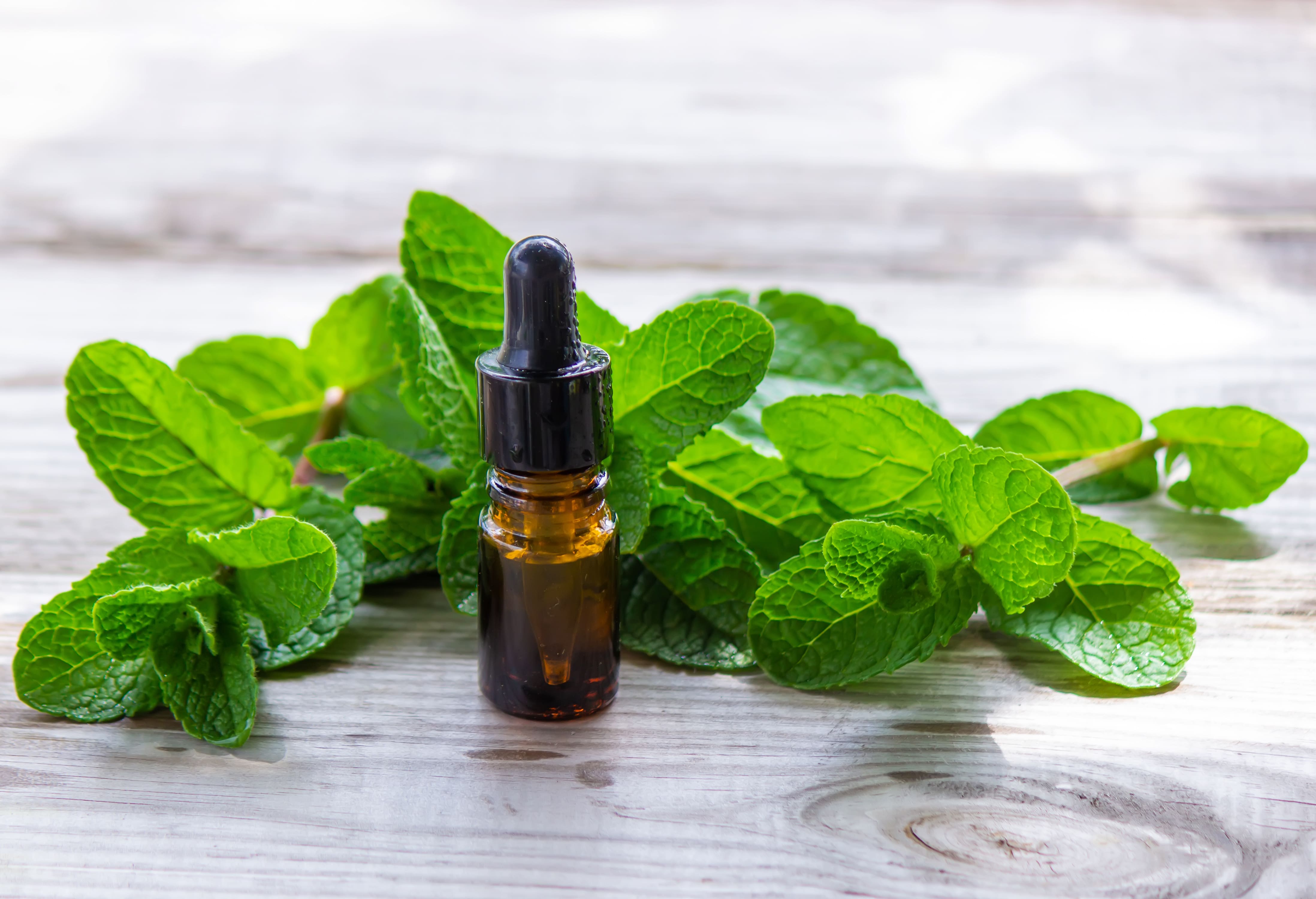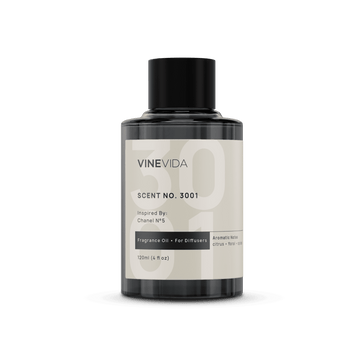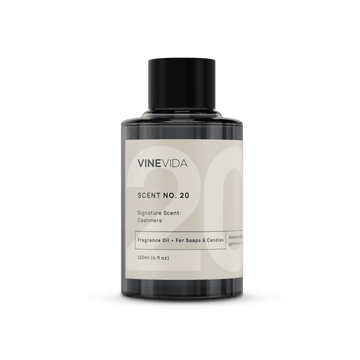There are two things to remember when you want to know how to dilute peppermint oil. The first is someone’s age, and the second is the time of day.
Peppermint is chock full of constituents to help you concentrate or to settle your digestion, but because they are so refreshing, peppermint will keep you awake all night.
Sleep is out of the window! But, then, menthol is a potent constituent that slows respiration, so we would use it with much more care in children than in adults.
This article looks at how to safely and efficiently dilute peppermint oil. We’ll investigate the different conditions it can be helpful for, discuss anyone who should not use it (pregnant women, for example), and identify any likely problems that arise with peppermint oil.
How To Dilute Peppermint Oil - Maximum Dilutions
Do not apply this oil neat. Essential oils should always be diluted into carrier oils and spread over a large surface skin area. We have several of them for you to choose from on our site.
We recommend 3% dilution for adults, 2% for people in a weakened state, and 0.25% for children over 6. We do not recommend using essential oils on children under 6 months old unless it is an emergency.
How to Dilute Essential Oils
Dilution is so much easier in metrics than it is in imperial measurements!
A great guide is that a teaspoon holds approximately 5ml of oil which equals about 100 drops of carrier oil.
If you work with teaspoon measures, dilution becomes simple.
- 3% dilution of peppermint oil in a teaspoon of carrier oil is 3 drops
- 2% dilution for someone who is weakened (Has been ill, is frail, and elderly)
- 1 drop = 1% dilution.
Easy peasy lemon squeezy!
Incidentally, if you come into contact with spillage and are exposed to more significant concentrations than noted above, just add more vegetable oil to dilute it, then wash it off with soap.
Calculating g dilution for children is harder because how do you do a quarter of a drop?
Do four teaspoons, roughly a tablespoon of the carrier, and splash more if you're lazy. Then one drop of peppermint oil in that. Peppermint is never a good choice for children…
Recommended Reading: What Is Peppermint Oil Good For?
Peppermint Essential Oil Energetics
This is a very refreshing oil. It is fabulous if you feel sluggish, lethargic, or need to focus, but kids are naturally already that way. Giving peppermint essential oil is like shoveling a ton of sugar in their faces and then washing it down with amphetamines…it’s just a terrible plan. Not only will they bounce off the ceiling, but they’ll also be awake for hours.
The high levels of menthol in Peppermint essential oil can make it a tough choice for children. As an essential oil, it fibrillates the heart. It makes it beat much faster, making us feel more alert and switched in. However, the menthol in it also slows respiration, so it would never be a good plan to apply it close to a child's face. If you really must use it, only apply it to their back. However, in our opinion, regardless of why you want to use peppermint essential oil, there will always be a better alternative when it comes to kids.
How To Dilute Peppermint Oil Safely: What To Look Out For
Pregnancy and Breastfeeding
We do not recommend using peppermint essential oil during pregnancy. While Peppermint essential oil is theoretically deemed safe for breastfeeding, essential oils do pass through into breast milk that not all babies like. If your child suddenly becomes reluctant to feed, cease use for a couple of days to ensure it is not the oil affecting their palate. Moreover, it is not conducive to either mom or baby getting a good night’s sleep. Therefore, we do not recommend using peppermint oil when breastfeeding.
Diffusion
We recommend that the maximum time you would diffuse for any purposes would be 2 hours before taking a one-hour break. This applies to humans and creatures alike!
Dealing with Accidents
Keep essential oils out of the reach of children. We do not advise ingesting any essential oils. However, if it does happen accidentally, drink milk and seek medical assistance. Take this leaflet and the oil bottle with you to the emergency room. Avoid the inner ears, eyes, and sensitive areas. If you should get it into your eyes or start a skin reaction, we suggest rinsing with vegetable oil to dilute it more. Do not try to rinse with water; oils and water do not mix, so it will merely spread the oil over a larger surface area. Cold full-fat milk will work, but it must have a high-fat content to absorb the essential oil. If you do happen to develop a rash, discontinue use immediately.
Other Safety Concerns
It is not recommended that Peppermint essential oil be used by anyone with either cardiac fibrillation or who has a deficiency of the enzyme G6PD. G6PD deficiency is a well-recognized deficiency that affects the blood. It is mainly found in men.
Peppermint Oil for GERD
However, if you suffer from gastroesophageal reflux, peppermint can further loosen the valve that contains acid in your stomach, allowing digestive juices to come up into the chest. Chamomiles, aniseed, fennel, or ginger will do a better job.
Recommended Reading: Peppermint Essential Oil for Beard Growth: Combat the Loss of Facial Hair
How to Dilute Peppermint Essential Oil Around Pets
It’s best to try to use your peppermint essential oil away from your animals if you can.
Peppermint essential oil can be used safely around dogs, but they often don’t like the smell. Likewise, it is repellent to most rodents and spiders.
It poses a potential risk of toxicity to cats as they do not possess the correct enzyme to metabolize some of its components in their livers. This means the oil does not break down into smaller parts in their system, so it’s as if they have imbibed it undiluted. In addition, diffusers, evaporators, and even reed diffusers propel drops into the air, which could land on your cat. Limit the time you leave it in the room, as the longer it stays, the more chance it has of collecting droplets on its fur and then grooming itself, which could be hazardous.
Please note that both cats and dogs have profoundly more vital senses of smell than we do, and like humans, each has its likes and dislikes, so always make sure the door is open for your pet to leave the room when they have had enough.
Recommended Reading: Is Peppermint Essential Oil Safe for Dogs? Here is Your Answer
A Note on Cat Toxicity
Introducing something new to the home is worth watching to see how it affects everyone. Some cats can develop a runny nose or itchy eyes from strong fragrances or burning sensations in their nose and throat. Watch out for them drinking more water than usual. Drooling can be a sign they feel nauseous, and watch for them vomiting or having difficulty breathing. They might seem to be coughing up a hairball, indicating respiratory irritation. If any of these start, the first thing to do is to get them out into the fresh air. Usually, being moved away from the scent will help. If not, then seek urgent veterinary assistance. Remember that you are witnessing poisoning, and they need immediate assessment.
Recommended Reading: Is Peppermint Essential Oil Safe For Cats?
What is Peppermint Essential Oil Good for?
Morning time. Use it in the evening, and it is a demon! You will have no sleep at all. Use it for refreshing starts to the day, and swap it out for chamomile after lunch.
- Digestive problems
- Indigestion
- Heartburn
- Helping you to concentrate
- Keeping you awake or refreshing you in the morning
- Massage oils for pain
- Stuffy noses
Sample Recipes to Show How to Dilute Peppermint Oil
Digestion
- 1 tbs Avocado Oil (Prunus armeniaca)
- 1 drop Peppermint Essential Oil (Mentha piperita)
- 2 drops Chamomile Roman Essential Oil (Anthemis nobilis)
- 1 drop Cedarwood Virginian Essential Oil (Juniperus virginiana)
Method of Use: Massage into the abdomen gently in a clockwise direction. A hot water bottle can help the oils get to work faster. Reapply hourly.
Safety: Not suitable for children under 10 or during pregnancy. Not ideal for sufferers of G6PD deficiency. Do not use old lemon oil since the monoterpenes degrade quickly and can lead to skin sensitization.
Stuffy Nose
- 1 tsp Grapeseed Oil (Vitis vinifera)
- 1 drop Peppermint Essential Oil (Mentha piperita)
- 3 drops Lemon Essential Oil (Citrus Limonum)
- 1 drop Myrrh Essential Oil (Communis Myrrha)
Method of use: Rub into the forehead and around the cheekbones. Also, apply to the back of the neck and the insides of the rest where there is a good blood supply, to get the oils to work fast.
Safety: Not suitable for children under 10 or during pregnancy. Not ideal for sufferers of G6PD deficiency. Do not use old lemon oil since the monoterpenes degrade quickly and can lead to skin sensitization.
Concentration Diffuser Oil
- 1 drop Peppermint Essential Oil (Mentha piperita)
- 2 drops Rosemary Essential Oil (Salvia rosmarinus)
- 1 drop Vetiver Essential Oil (Vetiveria zizianoides)
Safety: Not designed for topical use and does not burn around cats.
Conclusion
Remember how to dilute peppermint oil; for an adult, it is three drops of essential oil in a teaspoon of carrier oil. You must dilute it into a carrier oil. Reduce it to two drops in a teaspoon for someone in a weakened state.
From a safety point of view, you will need four teaspoons of a carrier to use on children, but you’ll also want to get some valerian oil to help you cope. Do not use peppermint essential oil on kids. Life is just too short.















